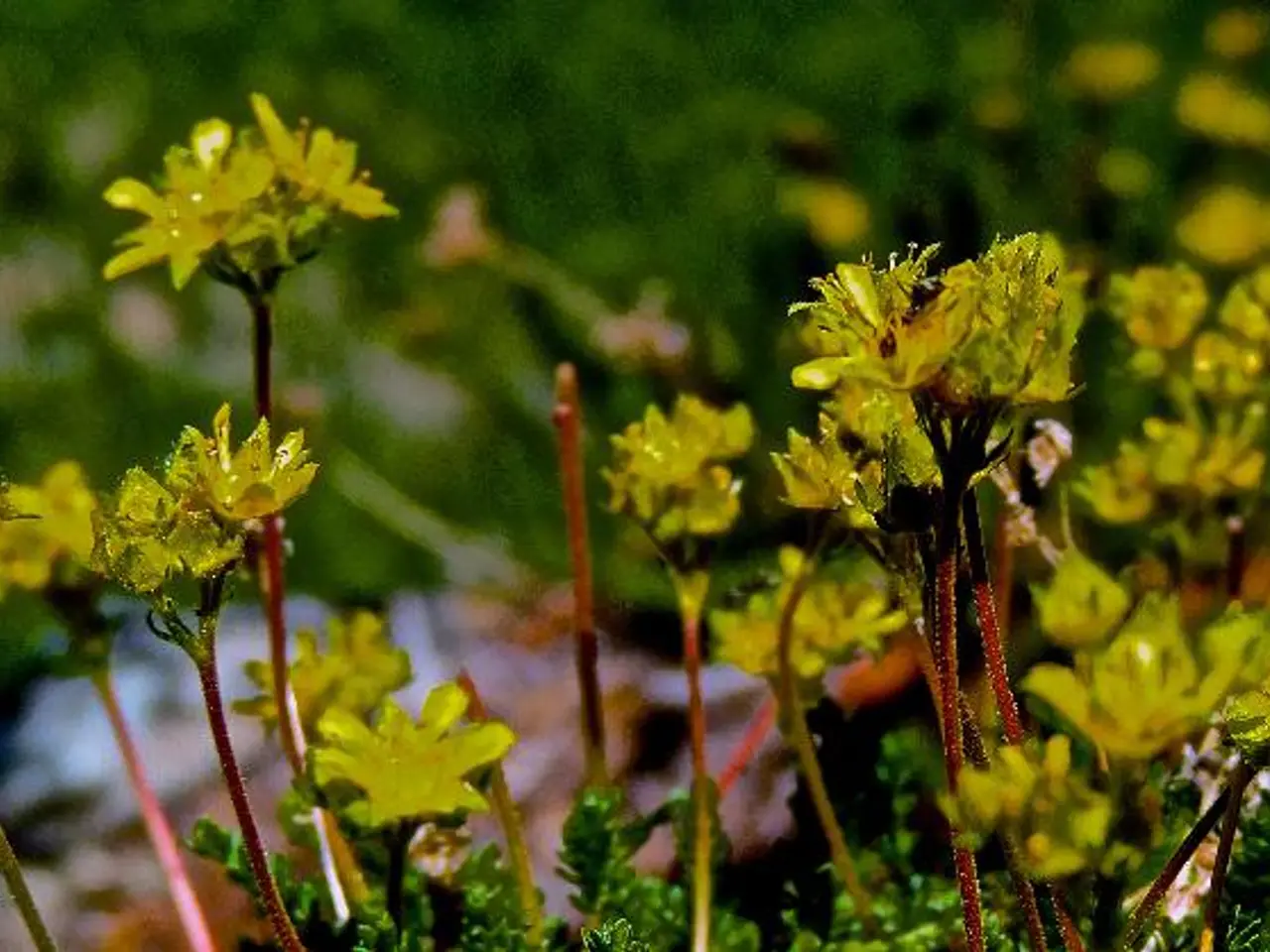Yellowing Crape Myrtle Foliage: Reasons and Solutions
In the world of gardening, crepe myrtles are a popular choice, known for their vibrant flowers and attractive bark. However, these beauties can sometimes face issues, such as yellowing leaves, which can be concerning for garden enthusiasts. Glen, an experienced gardener with over 15 years of hands-on experience, shares his insights into the common causes and solutions for yellowing leaves in crepe myrtles.
Crepe myrtles thrive in full sun and well-drained soil with a slightly acidic to neutral pH. Proper care, including adequate sun, water, and nutrients, is key to resolving most yellowing issues. However, there are other factors at play.
Common causes for yellowing leaves in crepe myrtles include nutrient deficiencies, overwatering or poor soil drainage, and certain diseases or disorders.
Nutrient Deficiencies
- Nitrogen deficiency typically causes yellowing of older leaves.
- Iron deficiency or other micronutrient deficiencies (such as sulfur, copper, manganese, or zinc) often cause yellowing of younger leaves or specific patterns like "rabbit tracks," which appear as chlorotic spots.
Solution: Test soil nutrient levels and amend accordingly with appropriate fertilizers or micronutrient supplements.
Overwatering and Poor Drainage
Excess water can suffocate roots, leading to yellowing and decline due to lack of oxygen and possible root rot (caused by pathogens like Phytophthora).
Solution: Check soil moisture and improve drainage by reducing watering, adding organic matter, or creating raised beds.
Diseases
- Root Rot caused by Phytophthora fungi leads to root damage and yellowing leaves.
- Powdery Mildew on crepe myrtles causes a white powdery coating but can stress plants and cause yellowing indirectly.
- Abiotic disorders like "rabbit tracks" caused by micronutrient deficiencies can also yellow leaves.
Solution: Improve cultural conditions, manage water properly, and treat fungal diseases with fungicides if necessary.
In addition to these, stress from physical damage (e.g., root cutting when digging near trees) can induce suckers and yellowing by weakening the plant.
Remedies:
- Conduct a soil test to identify nutrient deficiencies and amend soils accordingly.
- Avoid overwatering and ensure good soil drainage.
- Manage diseases through proper hygiene, fungicide treatment if needed, and avoiding stress to trees.
- Use growth regulators like Bonide Sucker Punch on suckers to reduce stress and manage unwanted shoots, which can indirectly help plant health.
For established crepe myrtles, seasonal care is crucial. During spring and summer, deep, infrequent watering is recommended, while in fall, yellowing may indicate a natural response to the changing season or a problem like disease or environmental stress.
Maintaining a layer of mulch around the base can help regulate soil temperature and moisture during seasonal changes. In fall, it's important to inspect for diseases like bacterial leaf scorch and monitor weather patterns to provide extra care if stress from environmental factors is suspected.
A balanced, slow-release fertilizer with even nutrients (nitrogen, phosphorus, potassium) is used in spring as new growth appears, helping develop a strong root system and lush green leaves. Pruning crepe myrtles is essential for promoting blooming and should be done in late winter or early spring.
By understanding these common causes and solutions, gardeners can help restore crepe myrtle leaf color and vigor, ensuring these beautiful plants continue to thrive in gardens across the globe.
[1] "Crepe Myrtle Care: How to Fix Yellow Leaves." The Spruce, https://www.thespruce.com/crepe-myrtle-yellow-leaves-1401919
[2] "Crepe Myrtle Diseases: Identifying and Treating Common Problems." The Arbor Day Foundation, https://www.arborday.org/trees/health/diseases/crepe-myrtle-diseases.cfm
[3] "Crepe Myrtle Yellow Leaves: Causes and Solutions." Gardenerdy, https://gardenerdy.com/crepe-myrtle-yellow-leaves-causes-and-solutions/
[5] "Crepe Myrtle Care and Maintenance." University of Florida IFAS Extension, https://edis.ifas.ufl.edu/pdffiles/HS/HS01000.pdf
Home-and-garden enthusiasts interested in cultivating crepe myrtles may encounter yellowing leaves, a common issue that stems from various factors. Addressing nutrient deficiencies, such as nitrogen or micronutrients like iron, copper, manganese, or zinc, is essential to restore vibrant colors to these beauties. Moreover, proper water management, adequate sun exposure, and good soil drainage are crucial for crepe myrtles' overall health and growth, wrapping up the relationship between their lifestyle, gardening practices, and the appealing home-and-garden design.




